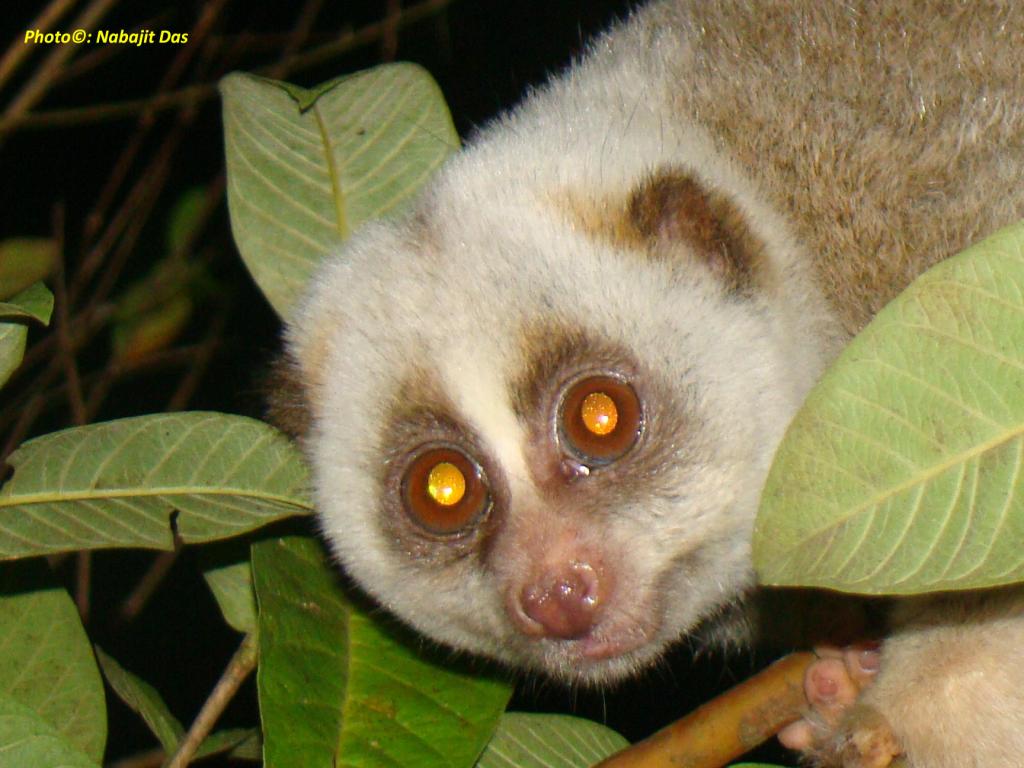Until slow loris awareness week, we shall now bring you slow loris facts of the day! Today we discuss the big beautiful eyes of lorises and welfare issues for tourists.
Fun fact! All species of loris and potto have a tapetum lucidum, a layer of light reflecting tissue behind the retina, that produces ‘eyeshine’ (See images). They have amongst the largest eyes of the primates, and amongst the most forward facing eyes. They can see their world in almost total darkness. The pupils become huge allowing them to see! Want some science? Read more!
Comparative morphology of the eye in primates
Eye Size at Birth in Prosimian Primates: Life History Correlates and Growth Patterns
A re-evaluation of the role of vision for the activity rhythms of nocturnal primates
Foraging behaviour of the slender loris: implications for theories of primate origins.
Pet Lorises: One of the worse reasons to keep a loris as a pet is because they are nocturnal. They only come out at night. In the wild, a loris will only move in the daytime if threatened by a predator or poacher. Terrified YouTube lorises with tiny pupils in bright light really struggle. Being kept awake all day, and always having to see world in daylight, upsets their circadian rhythms. The stress ‘forced diurnality’ causes would be one factor ultimately leading to death.
What can you do?? In our studies, we us see red lights that lorises cannot see (see article 3). If you want to watch any nocturnal animals at night, please use a red filter/gel/ bezl such as those available from Petzl or CluLite and never watch an nocturnal animal with an LED blue torch as this can cause damage to their eyes. If we photograph them we use red lights, infrared lights, and 1/200th of a second flash. Tourists: only ONE person should photograph a loris; never a group with many small flashes. This is pretty terrifying! If the loris shows signs of stress, freezing, blinking, running away, stop photos immediately.

